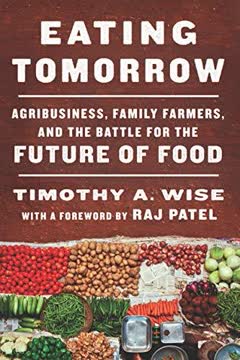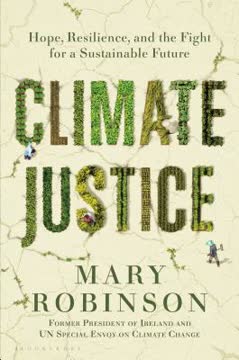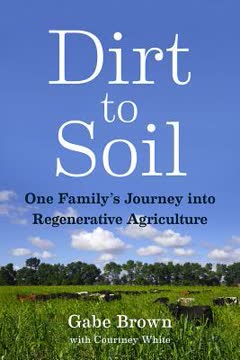Key Takeaways
1. Agribusiness Dominance Undermines Global Food Systems
Agribusinesses mostly don’t farm, but they make a great deal of money off of agriculture.
Corporate control. The global food system is increasingly dominated by a few powerful agribusiness conglomerates that control seeds, fertilizers, pesticides, processing, and distribution. These firms prioritize profit maximization over farmer welfare, environmental sustainability, or food security, creating a system where farmers assume all risks but receive a declining share of the rewards. In the U.S., farmers receive only 15% of the consumer food dollar, with the rest captured by retailers, processors, and input suppliers.
Economic power translates. This immense economic power allows agribusiness to dictate national and global policies, often under the guise of "feeding the world." The narrative of impending scarcity, often amplified by figures like Monsanto's Robert Fraley, serves as a convenient myth to open new markets for corporate products, despite evidence that current global production could feed 10 billion people. This hubris ignores that most of the world is fed by small-scale farmers, not industrial agriculture.
Perverse incentives. Agribusiness interests are fundamentally misaligned with those of farmers. While farmers desire low costs and high prices, corporations seek maximum production to boost input sales and low farm prices to reduce raw material costs for processing. This dynamic, coupled with increasing monopoly power, traps farmers in a cycle of dependence, where they are squeezed between costly inputs and cheap outputs, leading to declining incomes and environmental degradation.
2. Africa's Green Revolution: A Costly Failure for Smallholders
The biggest difference between Africa’s green revolution and the first one wasn’t the new technology, it was the failure to include the old technology.
Flawed diagnosis. The Alliance for a Green Revolution in Africa (AGRA), heavily backed by the Gates Foundation, promoted a narrow, technology-centric approach focused on commercial hybrid seeds and synthetic fertilizers, mirroring the first Green Revolution in Asia. However, it crucially omitted key elements like irrigation, credit, and infrastructure, which were vital to earlier successes. This oversight rendered the expensive input package largely ineffective for Africa's rain-fed smallholders.
Unsustainable dependence. In Malawi, the "Malawi Miracle" of increased maize production through input subsidies proved unsustainable. While initially boosting yields, the program primarily benefited multinational seed and fertilizer companies like Monsanto, which acquired the national seed company and discontinued popular local varieties. Farmers became dependent on costly annual seed purchases and fossil-fuel-based fertilizers, leading to stagnant yields, depleted soils, and a drain on national budgets.
Erosion of resilience. The focus on maize monocultures, driven by subsidies, led to a decline in crop diversity, undermining nutritional security and climate resilience. Farmers like Edwin Kasamba in Malawi demonstrated that local, drought-tolerant varieties and agro-ecological practices (intercropping, compost) could improve soil health and yields without expensive inputs. Yet, government policies, often influenced by agribusiness, continued to push for high-input, monoculture farming, ignoring proven homegrown solutions.
3. Land Grabs Displace Farmers, Fail to Deliver Development
The peril, as I saw in Mozambique and other parts of Southern Africa, was that when foreign capital landed with both feet it was usually on land already occupied and cultivated by farming communities.
New colonialism. The global food crisis triggered a wave of "land grabbing," with foreign investors acquiring vast tracts of land in developing countries, particularly in Africa. Projects like Pro-SAVANA in Mozambique, backed by Japan and Brazil, promised modernization and export-led growth but often resulted in the displacement of local communities, disregard for customary land rights, and environmental destruction. These initiatives were frequently shrouded in secrecy, lacking consultation with affected populations.
Failed promises. Many large-scale land deals, driven by speculative capital and neo-Malthusian fears, proved to be busts. The assumption that Africa had vast "underutilized" land was often false, as these lands were frequently used by communities for shifting cultivation, grazing, or forest products. The Wanbao rice project in Mozambique, for instance, displaced 7,000 farmers, destroyed crops, and failed due to financial issues and flood risks, leaving communities with ravaged land and broken promises.
Ignoring local solutions. Instead of empowering local farmers, governments often prioritized foreign investors, offering large concessions and publicly funded infrastructure. This approach overlooked the potential of small-scale, community-led initiatives, such as the women's cooperatives in Marracuene, Mozambique, which used agro-ecology, local seed banks, and rehabilitated irrigation to achieve food security and climate resilience. These grassroots efforts demonstrated that sustainable development could be achieved by supporting existing communities, not displacing them.
4. Industrial Agriculture's Environmental and Social Toll
We grow more corn to grow more pork to grow more corn to grow more pork, and so on.
The cornification of Iowa. Iowa, the heart of the U.S. corn belt, exemplifies the environmental and social costs of industrial agriculture. The relentless pursuit of corn and soybean monocultures, fueled by hybrid seeds, synthetic fertilizers, and factory hog farms, has led to severe environmental degradation. This includes:
- Loss of 50% of topsoil and organic content
- Nitrate and phosphorus runoff polluting waterways
- A "dead zone" in the Gulf of Mexico the size of New Jersey
- Air pollution and stench from concentrated animal feeding operations (CAFOs)
Economic concentration. Agribusiness consolidation has decimated rural communities. As farms "get big or get out," the number of farmers dwindles, and wealth is siphoned from local economies. In Iowa, the top four meatpackers control 90% of the hog market, driving down prices for farmers and wages for workers, while consumer prices remain high. This concentration of power stifles competition and innovation, leaving farmers with little leverage.
Policy failures. Government policies, such as the "Freedom to Farm Act" and biofuel mandates, have exacerbated these problems by promoting overproduction and subsidizing environmentally destructive practices. While solutions like diversified crop rotations (e.g., Matt Liebman's Marsden Farm Study) demonstrate significant environmental and economic benefits, they are largely ignored due to the powerful lobbying efforts of agribusiness, which profits from the current high-input, monoculture system.
5. Biofuels and Financial Speculation Fuel Food Crises
Food became fuel, and both became financial instruments.
Food-fuel competition. The rapid expansion of biofuel production, particularly U.S. corn ethanol and European palm oil biodiesel, was a primary driver of the 2007-2008 global food crisis. Government mandates and subsidies diverted massive amounts of food crops and land from food and feed markets to fuel production, causing prices to spike. U.S. corn ethanol alone consumed 40% of the U.S. corn crop, representing a 15% demand shock to global markets.
Speculative surge. Deregulation of financial markets allowed Wall Street speculators to create new commodity derivatives, bundling food and fuel into "asset classes." In the wake of the 2007 financial crisis, speculative capital flooded these markets, betting on rising prices. This influx of non-commercial investors distorted futures markets, pushing food prices even higher, regardless of actual supply and demand fundamentals.
Global impacts. The combined effect of biofuel expansion and financial speculation created a "perfect storm" that disproportionately harmed developing countries. Corn-importing nations faced billions in higher food bills, contributing to social unrest (e.g., Mexico's "tortilla riots," the Arab Spring). Biofuel demand also fueled land grabs and deforestation in countries like Indonesia and Guatemala, as land was converted to produce palm oil or sugarcane for export, displacing local food producers.
6. Protecting Maize Diversity: Mexico's Battle Against GM Crops
The judge surely eats tacos. Everyone here eats tacos. They know maize is different.
Center of origin. Mexico, the birthplace of maize, is a global center of origin for the crop, boasting immense genetic diversity in its native landraces. This biodiversity is a vital global resource, meticulously cultivated by indigenous farmers over millennia. Agribusiness giants like Monsanto sought to introduce genetically modified (GM) corn for commercial production, despite a nationwide ban and the inherent risk of gene flow contaminating native varieties.
Contamination threat. The legal battle against GM corn in Mexico highlights the unique vulnerability of its maize diversity. Maize is an open-pollinated crop, making cross-pollination with GM varieties inevitable, even with buffer zones. Studies have already confirmed the presence of transgenes in native maize, even within Mexico City, demonstrating that contamination is not hypothetical but a present reality. This genetic pollution threatens the integrity and evolutionary potential of native landraces.
Food sovereignty at stake. Mexican farmers, scientists, and chefs argue that GM corn offers few benefits to local agriculture, as existing varieties are productive and GM seeds are costly. More critically, it threatens food sovereignty—the right of people to define their own food systems. Monsanto's ambition to introduce GM white maize, a staple for tortillas, directly challenges Mexico's cultural identity and food security. Organizations like ANEC promote agro-ecology and local seed development as a path to self-sufficiency and independence from corporate control.
7. Free Trade Agreements Harm Farmers and Food Security
NAFTA has driven prices down dramatically, not just for maize but for a variety of crops small-scale farmers depend on.
NAFTA's broken promises. The North American Free Trade Agreement (NAFTA) promised to modernize Mexico, but for its agricultural sector, it proved disastrous. The agreement eliminated tariffs and liberalized capital flows, leading to a flood of cheap, often dumped, U.S. corn and other basic foods into Mexico. This undercut local farmers, driving down producer prices by as much as 66% for corn, making farming untenable for millions.
Displacement and dependency. NAFTA caused a massive displacement of Mexican farmers, with over 2.3 million leaving agriculture. Many migrated internally or to the U.S., sending remittances that became a lifeline for rural communities. Mexico, once largely self-sufficient in maize, became dangerously dependent on U.S. imports, importing one-third of its maize by 2007. This dependency made the country vulnerable to global price spikes and undermined its food security.
Globalization of market failure. Free trade agreements like NAFTA exacerbate market failures. U.S. corn, produced with heavy subsidies and without fully accounting for environmental costs (e.g., Iowa's water pollution), is "dumped" at artificially low prices. This underpriced industrial maize directly competes with and displaces more sustainably produced Mexican native maize, which is undervalued by markets that fail to recognize its biodiversity and cultural significance. This process leads to genetic erosion and the collapse of traditional farming systems.
8. The Right to Food: A Global Imperative Challenged by Trade Rules
The WTO is above our democracy when it comes to India’s food security.
India's ambitious program. India's National Food Security Act (NFSA) of 2013 is the world's most ambitious anti-hunger initiative, aiming to provide subsidized food rations to over 800 million people. Born from a Supreme Court ruling recognizing the "right to food," the NFSA includes:
- Expanded public distribution of rice and wheat
- Mid-day meals in schools
- Integrated child development services
- Rural employment guarantee programs
WTO's hypocrisy. Despite the NFSA's humanitarian goals, the U.S. government challenged India at the World Trade Organization (WTO), accusing it of unfairly subsidizing its farmers by purchasing crops at prices above market rates. This accusation is deeply hypocritical, given the U.S.'s own massive farm subsidies (often $20 billion annually) that distort global markets and harm developing country farmers. The WTO's outdated accounting methods further exaggerate India's alleged subsidies.
Beyond welfare. The NFSA is more than a welfare program; it's a rural development strategy. Government procurement at guaranteed prices stabilizes markets, reduces the exploitative power of middlemen, and incentivizes farmers to invest in production. It also ensures food availability in remote areas and promotes gender equity by putting ration cards in women's names. For a country where farmer suicides are tragically common, the NFSA provides a crucial safety net and a path to economic stability.
9. Agro-ecology and Farmer Sovereignty Offer Sustainable Solutions
We will defend our seeds and our sovereignty, not just in the courts but in the fields, in the streets, and in our collective demands for government policies that respect our rights.
Resilience from diversity. Across the globe, farmer movements are demonstrating that agro-ecology and food sovereignty offer viable, sustainable alternatives to the agribusiness model. These approaches emphasize:
- Crop diversity (e.g., intercropping, native varieties)
- Soil health (e.g., compost, reduced chemical inputs)
- Local seed saving and breeding
- Community-led development and market control
Empowering farmers. In Mexico, organizations like ANEC and Tosepan Titataniske are actively promoting agro-ecology, developing local seed banks, and fighting for territorial defense against megaprojects and GM crops. Their "Peasant Agriculture with Integrated Knowledge Systems" combines scientific expertise with traditional farmer knowledge to boost yields, reduce costs, and increase independence from transnational firms. This empowers farmers to control their own food systems and adapt to climate change.
A different future. The battle for the future of food is fundamentally a struggle to restore balance between family farmers and agribusiness. The current corporate-dominated system has failed to feed the hungry and is undermining the natural resources essential for future food production. By supporting farmer-led initiatives, recognizing the right to food, and challenging corporate political influence, societies can shift towards a more equitable, resilient, and sustainable food system that ensures everyone can eat today and tomorrow.
Last updated:
Review Summary
Eating Tomorrow receives mixed reviews, with an average rating of 3.80 out of 5. Readers appreciate the wealth of information on global agriculture, food systems, and corporate influence. Many find it eye-opening regarding agribusiness practices and their impact on small farmers. However, some criticize the book for being dry and overly detailed. Positive reviews highlight its insights into food sovereignty, sustainability, and the challenges faced by farmers worldwide. Critical reviews mention the book's academic tone and potential bias.
Similar Books
Download PDF
Download EPUB
.epub digital book format is ideal for reading ebooks on phones, tablets, and e-readers.










